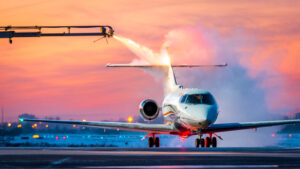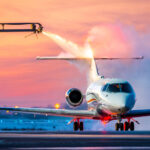Proper Pilot Training Can Prevent Landing Disasters
Pilot training is essential for preparation, but flying should never become routine – even the most experienced pilots can find themselves in a challenging situation when it comes to landing. The NTSB reminds us that perfect takeoffs don’t always lead to perfect landings, so review your bounced landing awareness and recovery techniques today. It only takes one moment for a seemingly normal flight path to get off track – let’s make sure we’re prepared with the right skills if (or when) an unexpected turbulence occurs during touchdown.
On a fateful day for Lufthansa Cargo, their MD-11 jumbo jet encountered an unexpected problem during landing. The impact of the bad bounce was so severe that it caused the fuselage to break apart. However, flight data revealed startling information regarding this incident: between 1st and 3rd touchdown two large control inputs had been made contrary to bouncing recovery procedures, plus third touchdown exceeded 4g’s limit set by aircraft manual while its pitch attitude reached 13 degrees nose up – disturbingly like go around requirements. In his statement afterward the captain confessed he felt completely out of depth dealing with such an extreme situation.
Because of this MD-11 accident, as well as several other similar landing accidents, the NTSB requested that the FAA require a change to the MD-11 flight crew operating manual. They specifically wanted to re-emphasize:
- High-sink-rate awareness during landing
- The importance of momentarily maintaining landing pitch attitude after touchdown
- Using proper pitch attitude and power to cushion excess sink rate in the flare
- The necessity of a go-around in the event of a badly bounced landing
Executing a Go-Around
To ensure a safe landing, it is essential for all pilots to be prepared for a go-around. Studies have revealed that many accidents could have been avoided if the crew had exercised this option earlier on in their approach. However, conducting an atypical go-around can become complicated quickly when ground contact has already occurred and other touchdown systems are activated; having adequate knowledge of your aircraft’s response will minimize any potential danger from late decisions. Ultimately, being adequately versed with advance preparations increases odds of success during landings significantly!
Here are some critical reasons why pilots should consider a go-around:
- Weather conditions: Unpredictable weather can make landing challenging, especially when there are strong crosswinds, gusts, or turbulence. A go-around can be a safer option under these conditions.
- Runway issues: Runways may have debris, animals, or other hazards that can obstruct a landing. Pilots must also consider the length and width of the runway during their approach. If the runway is too short or narrow, a go-around may be the best option.
- Speed and altitude: Pilots must maintain an appropriate speed and altitude during their approach. If they are too fast or too high, they may not be able to land safely. In such cases, a go-around can help them reset and attempt a more stable approach.
- Mechanical issues: If the aircraft experiences any mechanical issues, a go-around may be the safest option. This will give the pilot time to diagnose the problem and take corrective measures before attempting another landing.
- Visual cues: Pilots must have clear visibility of the runway and surrounding terrain during their approach. If they cannot see the runway or if there are any obstructions blocking their view, they should execute a go-around.
- Human factors: Pilot fatigue, distraction, or stress can impact their judgment during a landing approach. Pilots must be aware of their mental state and, if they feel overwhelmed, execute a go-around.
Recovery from a Bounced Landing
Things happen and you may not always execute a go-around, when necessary. A bounced landing can occur due to various factors such as improper flare technique, landing too fast, or incorrect pitch control. If a pilot does not properly recover from a bounced landing, the aircraft may continue to bounce, which could lead to a loss of control and ultimately result in an accident.
- How to correct a bounced landing:
- Apply full power to initiate a go-around.
- Set the pitch attitude for Vy (best rate of climb speed) or Vx (best angle of climb speed).
- After attaining a safe airspeed, retract any flaps that were extended during the landing approach.
- Raise the landing gear if it was lowered.
- Climb to a safe altitude and stabilize the aircraft.
- Execute a stabilized approach and landing.
- Recommended airspeeds:
- During the climb, maintain either Vy or Vx airspeed depending on the situation. Once stabilized, use appropriate airspeeds for a normal approach and landing.
- Additional safety and risk factors:
- Pilots should always ensure that they are well-rested, alert, and prepared before taking off. Additionally, they should always check winds aloft and landing conditions before attempting a landing.
- Key considerations to avoid a bounced landing:
- To avoid a bounced landing, pilots should maintain consistent airspeed and pitch control throughout the approach. This will help ensure a stable descent rate, proper flare height, and touchdown at the appropriate airspeed.
Regardless of what you fly or how much experience you have, take the time to study the nuances of your specific aircraft before you need to know how it will handle. Practice bounced-landing awareness and recovery techniques in your pilot training sim sessions and you’ll be better prepared to save the day if the situation ever happens to you.
RELATED READING
RELATED CTS TRAINING









